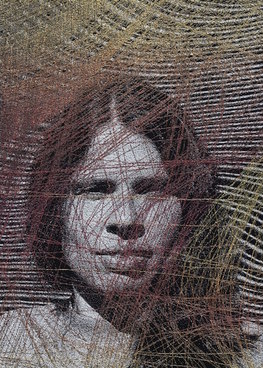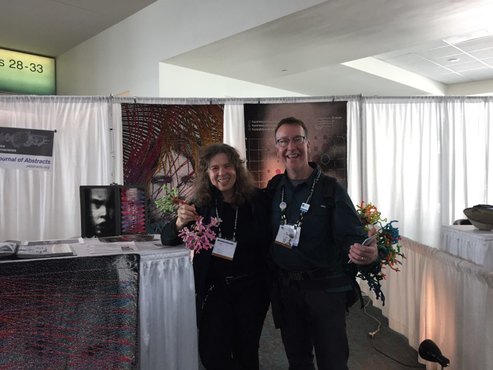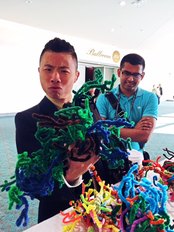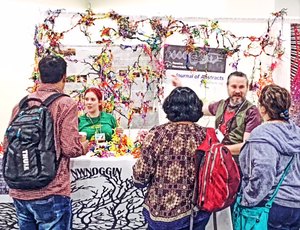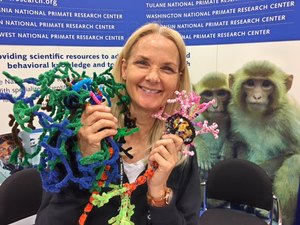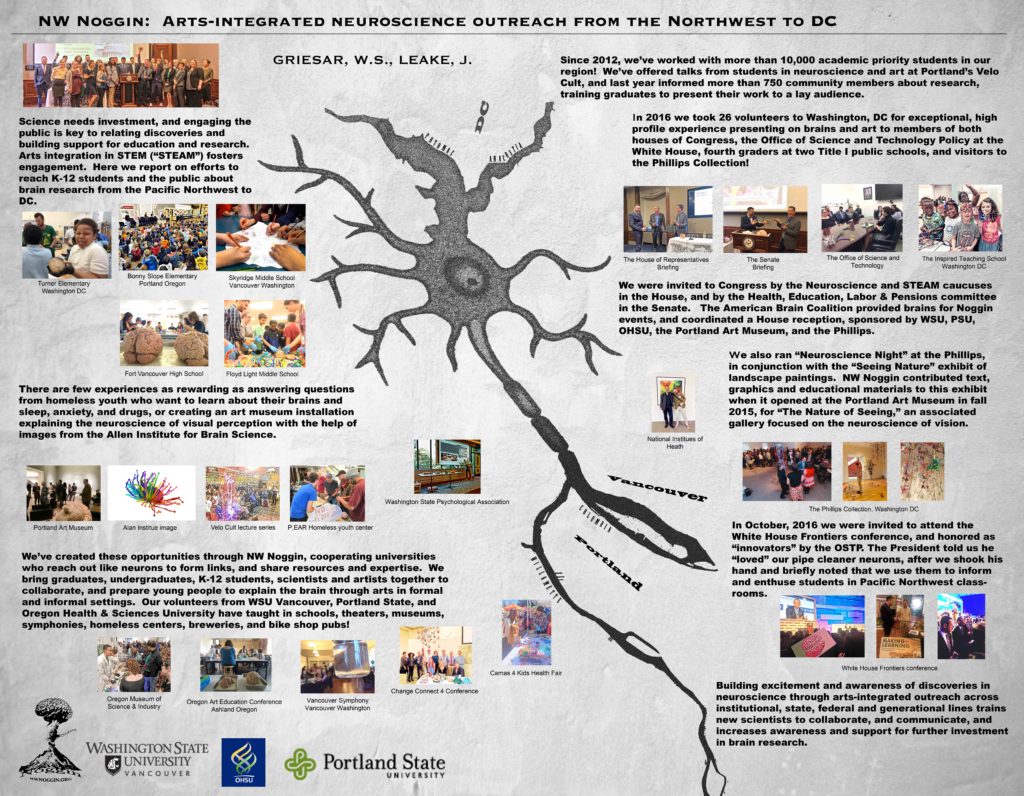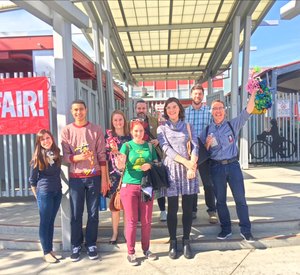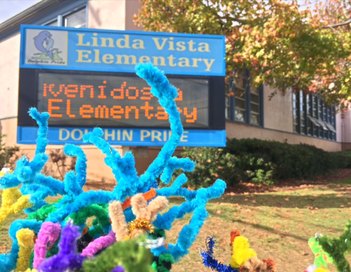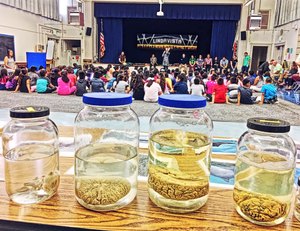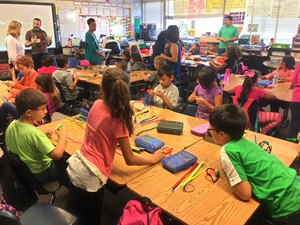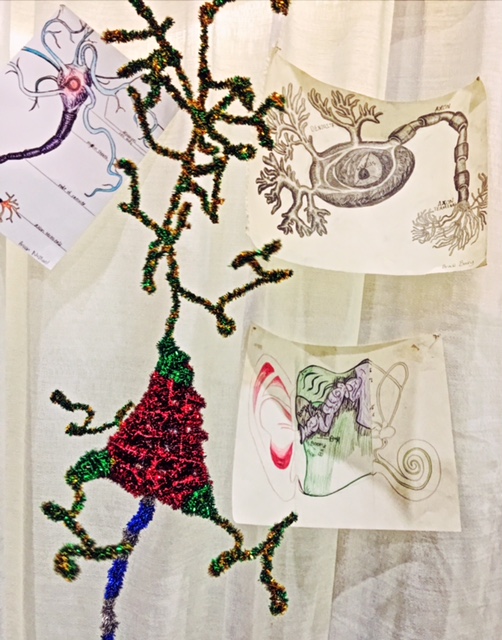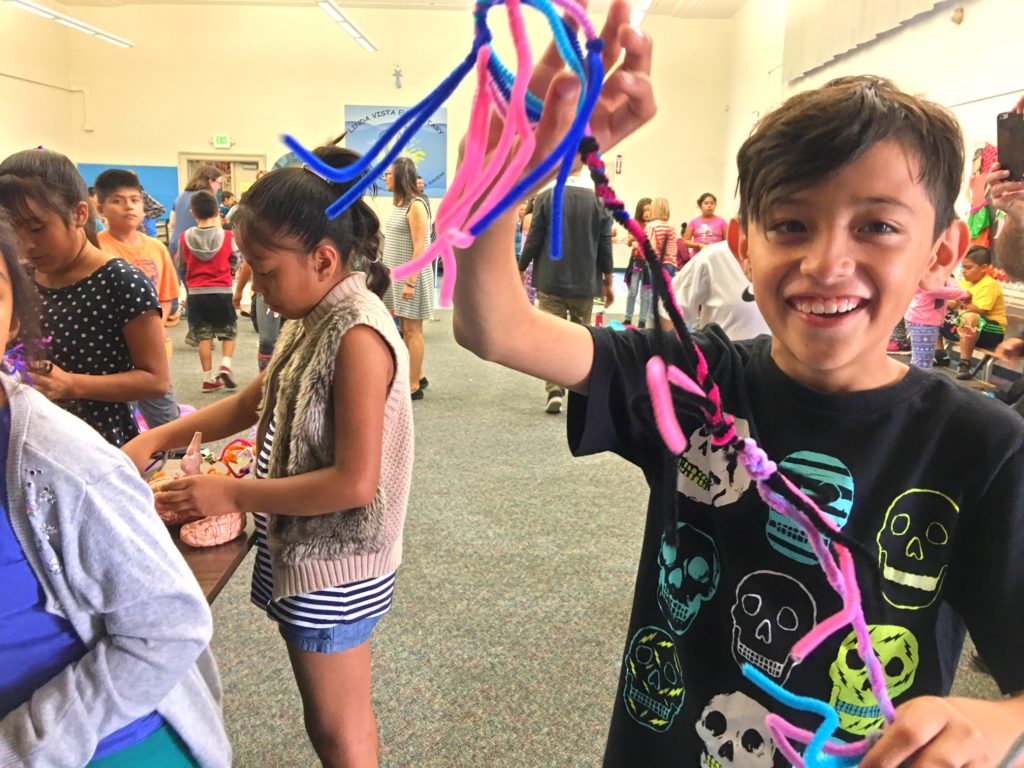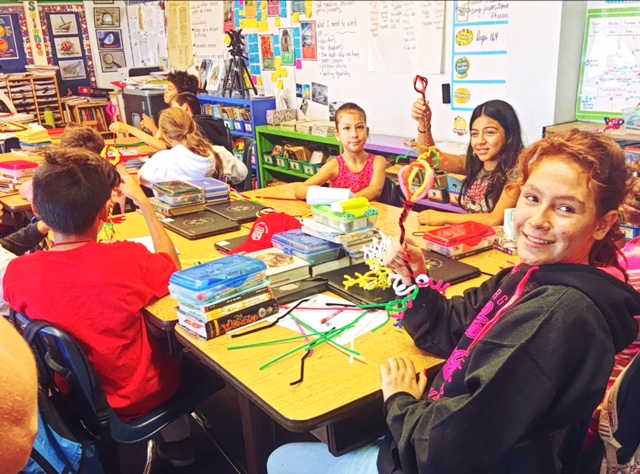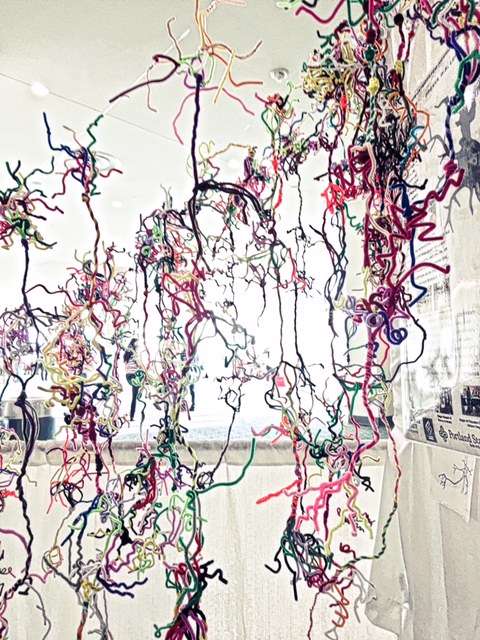Our trip to the annual Society For Neuroscience conference in San Diego this year was really about the need for science outreach in public schools, and the effectiveness of arts integration as a vehicle for learning.
We were fortunate this year to be offered a booth in the Art of Neuroscience displays right next door to our friend and amazing artist Lia Cook.
As a result we talked to many hundreds of neuroscientists (and many uber drivers, baristas, bartenders, and people just walking down the street!) about arts integrated science outreach (STEAM). Our hope is that we provided a spark of inspiration for others to engage their own communities both here in this country, and around the world, in creative learning.
We not only presented on our current and previous efforts, but much more importantly we were able to engage in our own outreach and visit two public schools while here.
We saw over 250 4th and 5th grade students at Jefferson Elementary and Linda Vista Elementary.
We talked to them about what they knew about their brains, and what they wanted to know (for more details on this see Bill’s post)
We then looked at the structure and function of neurons using some models we had made earlier.
This was followed by our pipe cleaner neuron project.
pipe-cleaner-neuron-lesson-plan
By doing this we are able to visualize the neuron and talk about how its structure relates to its function. We are also careful to provide them with enough structure to get a useful and fairly accurate representation of a neuron while at the same time allowing them enough room to be creative individuals. For us this is critical as it allows students a personally relevant connection to the material we are discussing. This is beneficial to everyone, but particularly for many of the academically at risk youth that we typically work with.
EXPLORE MORE: Catterall, J. S., Dumais, S.A., & Hampden-Thompson, G. (2012). The Arts and Achievement in At-Risk Youth: Findings from Four Longitudinal Studies, Research Report #55. ![]() Washington, DC: National Endowment for the Arts.
Washington, DC: National Endowment for the Arts.
This is also more engaging for them, it helps with their retention, and more importantly their broader understanding of the concepts we’re discussing.
EXPLORE MORE: Rinne, L., Gregory,E., Yarmolinskaya, J., & Hardiman, M. (2011). Why Arts Integration Improves Long-Term Retention of Content. Mind, Brain, and Education, 5(2), 89-96(8).
Over the past few years we have found that this combination of actionable information, visualization, and personalized creativity is particularly effective in engaging and enthusing people of all ages about learning in general.
EXPLORE MORE: Hardiman, M. (2012). The Brain-Targeted Teaching Model for 21st-Century Schools. Thousand Oaks, CA: Corwin.
Afterwards we were able to display the student work as a neural network at the conference. Our hope is that this effort will provide a spark to encourage others to do some outreach of their own. Today, the last day of the SfN conference, the pipe cleaner network was returned to the schools so the students will be able to experience their neurons not just as individual art projects but as part of a interconnected community web…
Many thanks to all of our tireless volunteers, including John Harkness (WSUV), Alex Camino (WSUV), Scott Jones (OHSU), Rebecca Hood (OHSU), Allie Clark (PSU), Alfredo Zuniga(OHSU), Morgan Wirthlin (Carnegie Mellon), Andre Walcott (OHSU), and Amanda Barkley-Levinson (San Diego State University).
And Caroline Sferrazza from UC San Diego for letting us borrow the brains!!
And also Ellen Potter and Judy Berman Silbert of ArtReach for helping to set all this up ?
And Rob Corona from the San Diego Unified School district for making all of this happen!



